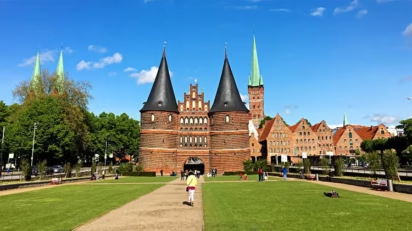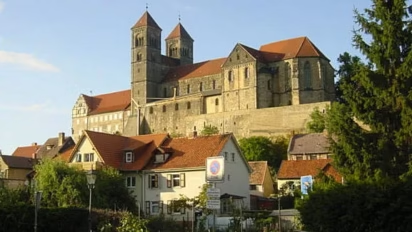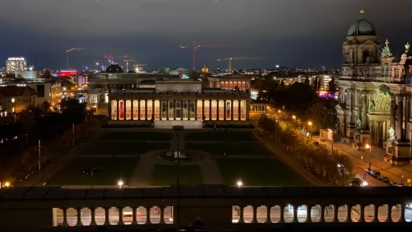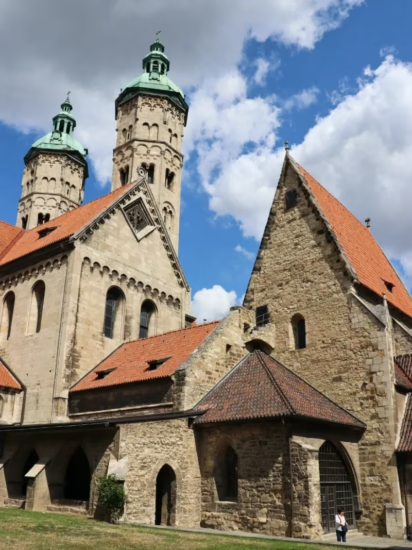Germany is a keen participant in UNESCO activities and takes the UNESCO World Heritage List of major cultural, natural, and historic sites very seriously.

More than 50 German cultural, architectural, and natural properties are inscribed on the UNESCO World Heritage List with more sites on the tentative list that may be nominated for inclusion in the near future. These cultural, architectural, and natural treasures help explain German influence in humanity’s common heritage.
UNESCO World Cultural and Natural Heritage Listed Sites in Germany
German sites on the UNESCO World Heritage List (in order of inclusion on the list) are:

Aachen Cathedral (Dom) – the core is Carolingian from around 800.
Speyer Cathedral (Dom) – the largest Romanesque building in Germany.
Würzburg Residence (Residenz) – this sumptuous palace is a synthesis of the European Baroque.
Pilgrimage Church of Wies (Wieskirche) – the definitive work of the Bavarian-Rococo designed by Dominikus Zimmermann.
Palaces Augustusburg and Falkenlust at Brühl – Germany’s first major Rococo palace and favored residence of the Cologne Archbishops.
St Mary’s Cathedral (Dom) and St Michael’s Church (Michaelskirche) in Hildesheim – two important early Romanesque churches.
Roman Monuments, Cathedral (Dom), and Church of Our Lady (Frauenkirche) in Trier – Germany’s oldest city has its largest Roman monuments and first Gothic church.
The Hanseatic City of Lübeck – a medieval town plan and marvelous brick Gothic buildings.
Palaces and Parks in Potsdam and Berlin – the preferred residences of the Prussian Electors and Kings; including Frederick the Great’s Sanssouci.
Abbey of Lorsch – the only Carolingian building to have survived in its original form.
Mines of Rammelsberg and Historic Town of Goslar – an important residence of early German kings and the mines a source of wealth for centuries.
Town of Bamberg – the old town, with over 1000 listed buildings, kept much of its early medieval layout.
Kloster Maulbronn Monastery Complex – the best-preserved Cistercian monastery in Germany.
Collegiate Church, Castle, and Old Town of Quedlinburg – a remarkable ensemble of 1,300 half-timbered buildings and an important church from early German history.
Völklingen Ironworks (Hütte) – the only completely preserved nineteenth-century ironworks in Europe.
Messel Pit Fossil Site – life as it was known 49 million years ago; finds include 30 complete skeletons of pre-horses.
Cologne Cathedral (Kölner Dom) – the largest Gothic church façade in the world, constructed between 1248 and 1880.
Bauhaus Sites in Weimar, Dessau, and Bernau – the origins of this influential design school.
Luther Memorials in Eisleben and Wittenberg – sights associated with the church reformer.
Classical Weimar – a small town but a giant in German literature and the preferred home of Schiller and Goethe.
Wartburg Castle in Eisenach – the most German of castles.
Museum Island (Museuminsel) in Berlin – an island in the heart of Berlin with numerous mostly nineteenth-century museum buildings.
Garden Kingdom of Dessau-Wörlitz – eighteenth-century English landscape-style gardens.
Monastic Island of Reichenau – three important Romanesque churches.
Zollverein Coal Mine Industrial Complex (Industriekomplex Zeche) in Essen – a major industrial complex with Bauhaus-inspired architecture from the 1930s.
Historic Centers of Stralsund and Wismar – medieval town plans and brick Gothic architecture.
Upper Middle Rhine Valley – natural beauty, wine, and endless castles.
(The Dresden Elbe Valley was delisted in 2009 due to a road bridge being built across the Elbe River.)
Town Hall (Rathaus) and Roland of Bremen – the market square of an important Hanseatic League city.
Muskauer Park / Park Muzakowski – a nineteenth-century park split by the Neisse River, or German-Polish border since the end of World War II.
Upper German-Rhaetian Limes – the frontier between civilized Rome and barbaric Germania ran 550 km from the Rhine to the Danube – Europe’s longest monument.
Old Town of Regensburg with Stadtamhof – Germany’s best-preserved medieval city core.
Berlin Modernism Housing Estates – innovative low-income housing estates erected between 1910 and 1933.
The Waddensee (shared with the Netherlands) – a flat coastal wetland with an important and largely undisturbed intertidal ecosystem.
Fagus Factory in Alfeld an der Leine – a 10-building factory complex designed by Walter Gropius in 1910 as a prelude to the Bauhaus.
Prehistoric Pile dwellings around the Alps – 111 Neolithic and Bronze Age dwellings in the Alpine region. (Shared with Switzerland and other Alpine nations.)
The 18th-century Margravial Opera House in Bayreuth — the only surviving original Baroque court theater.
The Bergpark Wilhelmshöhe in Kassel — a remarkable Baroque and Romantic parc with monumental water displays.
The Carolingian Westwork and Civitas Corvey in the Weser Valley near Höxter – an important Carolingian architectural expression showing the importance of imperial monasteries in securing territorial and administrative control in the Frankish empire.
Speicerstadt and Kontorhaus district with Chilehaus in Hamburg as an example of a warehouse-office district associated with a port city.
Homes in the Weissenhof Siedlung in Stuttgart as one of 17 sites in various countries (mostly France) of an outstanding contribution to the modern movement by architect Le Corbusier.
Caves and Ice Age Art in the Swabian Jura including some of the oldest figurative artworks by humans.
Primeval Beech Forests of the Carpathians and other regions of Europe – include four forest areas in Germany.
The Viking trading center Haithabu (Hedeby) and Danevirke defensive wall system near Schleswig in northern Germany.
Naumburg Cathedral – the transition from late Romanesque to early Gothic with masterful medieval life-size sculptures of the church founders.
The Erzgebirge / Krušnohoří (Ore Mountains — shared with Czechia) — a region exploited for minerals since the Middle Ages as the most important source of silver in Europe from 1460-1590 and uranium at the end of the 19th century.
Water management system of Augsburg — a network of canals and water towers dating from the 15th to 17th centuries.
Frontiers of the Roman Empire – The Danube Limes 600 km of frontier with roads, fortresses and settlements (shared with Austria and Slovakia)
Frontiers of the Roman Empire – The Lower German Limes — military and civilian sites in Germany and Netherlands.
Mathildenhöhe Darmstadt — buildings from the emerging architecture, arts, and crafts movement and international exhibitions in the early 20th century.
ShUM Sites of Speyer, Worms, and Mainz — early medieval Jewish structures that served as prototypes for later community and religious buildings in Europe.
The Great Spa Towns of Europe — water spa towns in 7 European countries from the 18th century to 1930s. From Germany: Bad Ems, Baden-Baden, and Bad Kissingen.
Jewish-Medieval Heritage of Erfurt — the Old Synagogue, the Mikveh, and the Stone House.




